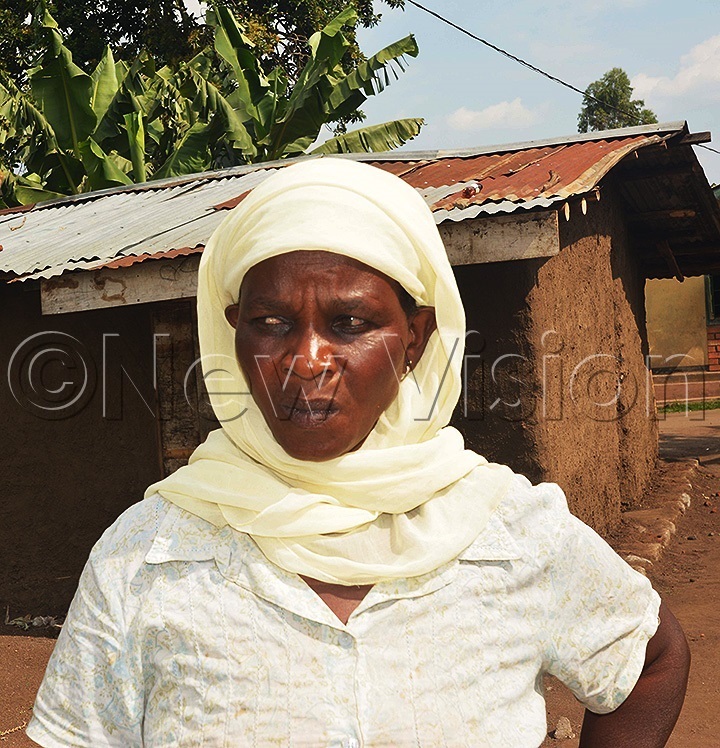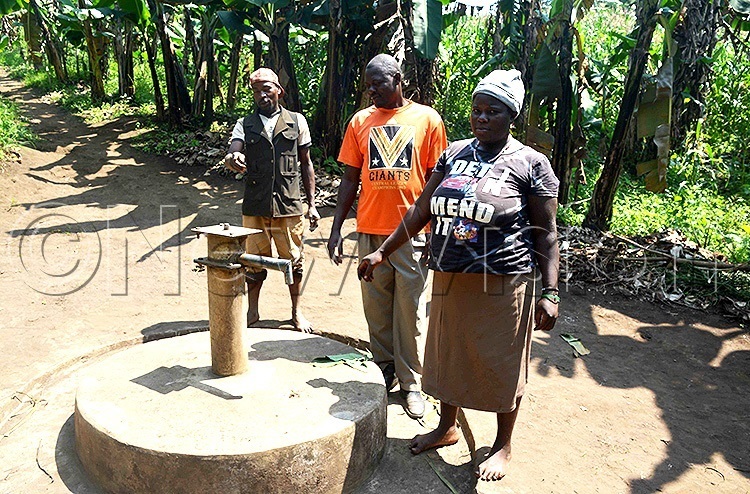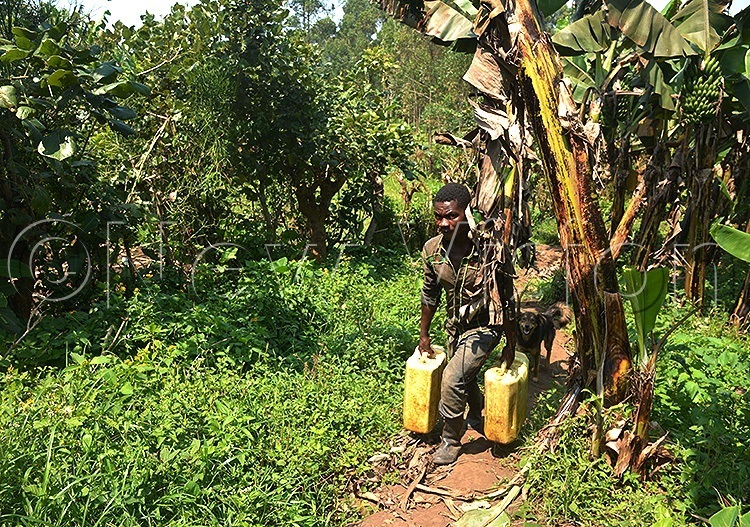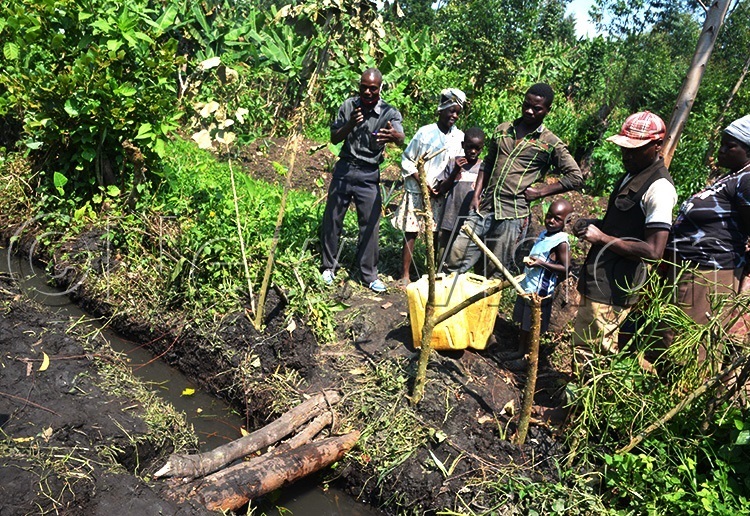Kabarole moves to get access to water, sanitation for all
Jul 14, 2020
Last year in February, Kabarole district launched its WASH (Water Sanitation and Hygiene) Master plan 2018-2030 that provides a framework for implementation and delivery of the vision of safe water, sanitation and hygiene for all by 2030.

HEALTH ENVIRONMENT SANITATION
The name Kabarole means "let them see." This was probably coined centuries ago but it has become more relevant in recent times. The district in western Uganda has been catapulted into the limelight as a model demonstrating how to achieve access to safe water and sanitation services for all, writes Gerald Tenywa
Imelda Bamwogeza, a resident of Bugoma village, Karambi sub-county in Kabarole is a contented mother. She does not have to walk out of her residence to collect water. This is because a hand-dug well has been constructed at her doorstep.
"I get water any time I need it," says Bamwogeza, adding that fetching water is no longer a back-breaking activity.

The time saved by Bamwogeza has been put to profitable use by making handicrafts. "I earn an extra income which was not the case previously," said Bamwogeza.
Standing in pride and dignity at Kitarasa ward in Karago Town Council, Fort Portal is Moses Kwikiriza, the LC1 chairperson of the village. He is leading by example after constructing a modern pit latrine at his premises.
"I constructed this pit latrine and three other people have followed in my footsteps," he said, adding that the pit latrine has cut the chances of spreading water-borne diseases in his village.
This is what all the 325,261 people living in Kabarole deserve-total access to water and sanitation, according to Olive Tumuhairwe, a health inspector working with Kabarole District.
Tumuhairwe says access to safe water is very important because water is life and health is wealth. "Provision of safe water, sanitation as well as hygiene for everyone in the family would go a long way in cutting the disease burden," she told New Vision in an interview recently.
Last year in February, Kabarole district launched its WASH (Water Sanitation and Hygiene) Master plan 2018-2030 that provides a framework for implementation and delivery of the vision of safe water, sanitation and hygiene for all by 2030.
Kabarole is the first district in Uganda with such a masterplan and is setting the pace in costing the planning and investment required to achieve the targets of sustainable development goal six for safe water, sanitation and hygiene.

The International Center for Water and Sanitation (IRC) describes Kabarole's step to draw a roadmap as a milestone towards achieving SDG6 in the district.
"They have a document that states the existing situation and the financing gap in the district," says Jane Nabunnya Mulumba, Country Director IRC Uganda. "Now they know and can immediately state this is how much we need to deliver SDG6 in Kabarole," she says.
The masterplan has estimated $24m as the financing required for quality water services and $48m for sanitation for everyone in Kabarole to be reached and served.
Kabarole District Chairperson Hon. Richard Rwabuhinga said collaborating with the International Center for Water and Sanitation (IRC) gave the district the push to visualize what exactly was needed to achieve their vision.
"The challenge of our time in as far as the WASH sector is concerned, is the lack of coordination and collaboration," says Rwabuhinga. "Should we get the resources, now we are sure where we are going," he adds.

With only 10 years remaining to achieve the target, access to water services in Kabarole remains low at only 58% and less than the national average of 70%.
In addition, the reliability of existing water supply facilities is very low (45%) due to poor operation and maintenance that leads to frequent breakdown. There is a high contamination of drinking water sources (64%), especially in rural areas.
Sanitation
Over 60% of the latrines in rural areas are poorly constructed, do not meet the standards for basic sanitation services and cannot be emptied. Moreover, the district has only one emptier.
In addition, the adoption of handwashing at household level is very low. Less than 10% of the households had improved sanitation facilities with water and soap.
Coordination
There is a need for better coordination between CSOs, government and the communities to improve access to safe water.
"Rather than rush to construct water points without consultation with the district WASH governance structures, IRC works together with the district and other partners to localize the vision of SDG6," says Martin Watsisi, Regional WASH Advisor at IRC Uganda.

"We involve the community because they need to manage the water sources themselves and that ensures sustainability," adds Watsisi.
Expensive infrastructure
Water services require expensive construction. A water scheme to serve one parish, for example, is estimated to cost Ush.1.3b, according to Watsisi. "On average a district is allocated sh400m for four water sources as a conditional grant. If all this is going to construct a water scheme for a parish, you need five years to construct a scheme of sh1.3b," said Watsisi.
He also pointed out that government is not making adequate contribution for operation and maintenance, leaving the burden entirely to the users.
Government has set a critical threshold of sh400,000 for the district to repair a water source, according to Watsisi. But if a water point breaks down (at the beginning of the financial year), the repair of the water source has to wait for the next financial year.
According to Watsisi, there are water sources that have not been functional for three years. He adds that there is a bureaucratic chain that starts with the LC1 through the Parish, sub-county and then district offices.
"The process of procurement takes long-as long as two months," said Watsisi. "That is why water sources take long to be repaired."
He added, "When they take that long what will the community be doing?" They will resort to alternatives-unprotected water sources."
The water quantity and quality of water is declining as a result of pollution from commercial tea growing and faecal contamination.
This has come as a result of weak institutional capacity for water resources management and lack of sound governance for water resources management, especially at the local level.
According to Brian Guma, the team leader of the Albert Water Management Zone, the water in the river had thinned out during the dry spells. Today, the river is recovering after re-afforestation and restoration of the wetlands.
"Provision of WASH services takes more than just effective management of natural resources. We need the right infrastructure, robust institutions, implementable laws, effective planning, financing and monitoring and learning," said Rwabuhinga.
Kabarole is not yet there but has tremendous experiences to share with other districts that are still grappling with how to make progress to access to water and sanitation by 2030.
